In Old-World Hungary, the New F1 Emerges in Small but Telling Ways

BUDAPEST, Hungary — Formula 1 is all over social media these days, in contrast to past strictures that made postings rarer than Mercedes or Ferrari losing a race.
F1’s top brass also cruises into the racing paddock unescorted to (gasp) mingle with fans. The new bosses have also decreed that failure to display one’s pass at all times is no longer cause for automatic expulsion from the grounds.
Welcome to the new F1, now owned by America’s Liberty Media Corp., which purchased Formula 1 Group late last year from former owner-cum-supremo Bernie Ecclestone.
Liberty Media wanted to save F1 from an impending crisis caused by declining attendance and low TV viewership. And in the process, Liberty Media saw the chance to reap huge profits to justify its $8.3 billion purchase price.

As an avid F1 fan, I was keen to investigate how Liberty’s presence had affected the F1 experience and whether it might re- engage fans. A family trip to Budapest, Hungary for the recent mid-season Hungarian Grand Prix — won by Sebastian Vettel as the Ferrari team’s rivalry with Mercedes accelerates — provided a great opportunity to do so.
Nowhere has Liberty’s new approach been more dramatic than with social media, a perennially contentious issue for F1. Ecclestone controversially barred social media from the paddock a few years ago and fiercely guarded F1’s video archives, to keep tight control over exposure and profits.

But this year Liberty uploaded some archives to YouTube and lifted Ecclestone’s social-media ban during preseason testing. These moves produced an outpouring of support from fans who were finally able to follow the drivers and teams outside the confines of traditional media.
At the Hungaroring, teams and drivers alike were taking full advantage of social-media channels throughout the weekend, keeping fans, including me, updated in near real time. A dedicated social media push was necessary, three time world champion Niki Lauda told me. “Social media is today,” he says. “I like it, it is perfectly right, and we have to use social media. It is very important for Formula 1.”

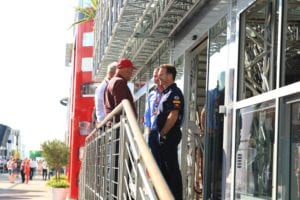
Lauda is certainly right; social media helps Formula 1 in myriad ways, not the least because allows fans to see the human side of the sport. This is especially important considering that F1 drivers have been seen as having dry, robotic personalities.
Drivers such as three-times F1 champion Hamilton have been relishing their newfound social media freedom this season. The combined 9.2 million followers on his Instagram and Twitter accounts suggest that the more fans can come to know their favorite drivers, the more interest F1 will attract.
But allowing drivers and teams to use social media was low-hanging fruit for Liberty Media. With an all-access press pass in hand, I could explore whether Liberty’s ownership is affecting the culture in the paddock. The answer is yes, in small but important ways.
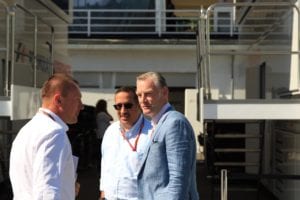
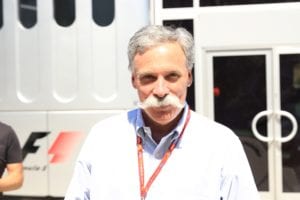
New F1 Group Chief Executive Chase Carey and Commercial Operations Director Sean Bratches could be seen casually walking into the paddock unaccompanied every morning at around 9:30 a.m., greeting passersby and posing for photos. What a contrast to Ecclestone’s famously brusque demeanor and larger-than-life aura.
Gone were Ecclestone’s “pass requirements” requiring that everybody display their pass or face expulsion. Many people weren’t displaying their passes, without consequence.
More striking was the new-for-Hungary “paddock fun zone,” which included ping pong and foosball tables, a soccer skills area, and even live music. “This is the new Formula 1,” remarked Sky Sports commentator Ted Kravitz. The fun zone was everything that Ecclestone’s F1 was not; it existed purely for enjoyment, and proved extremely popular over the weekend.
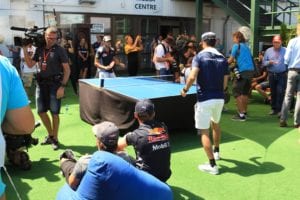
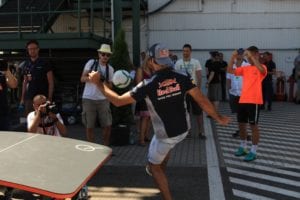
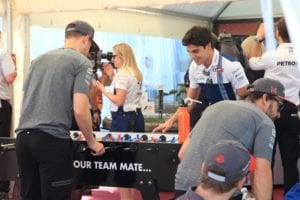
F1’s management arranged for all of the drivers to spend a few minutes in the fun zone right before the race. Watching the Sauber team’s Pascal Wehrlein and Toro Rosso’s Carlos Sainz Jr. play ping-pong was a surreal sight and a clear demonstration of Liberty’s commitment to making the F1 experience more relaxed and accessible.
Of course, some things haven’t changed, at least not yet. Though the pass-display requirement is gone, F1 still issues an unintelligible variety of passes with largely similar privileges, which can cause confusion and frustration. Additionally, when I approached Sainz Jr. on Sunday evening with a casual question, he explained that his team doesn’t allow him to speak to “media without a microphone,” which seemed a relic of F1’s old culture of prioritizing its television and traditional media business above all else. Maybe that will change.
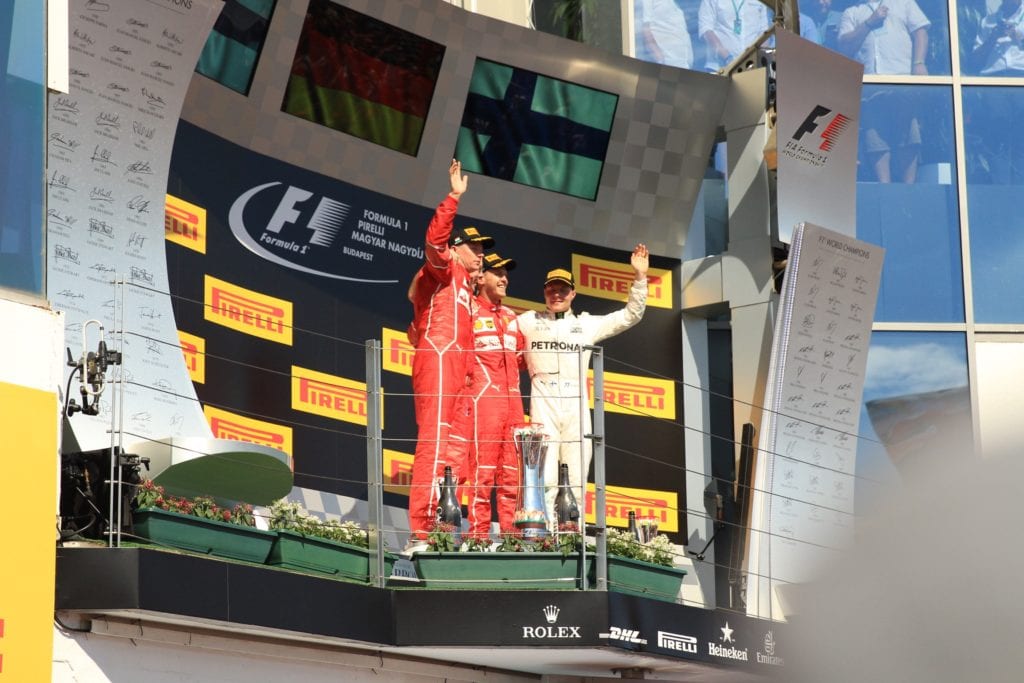
Former World Champion Jenson Button recently tweeted that F1 previously took itself “way too seriously,” and was becoming irrelevant to manufacturers and fans alike. Liberty’s new emphasis on social-media outreach and making F1 “fun” was immediately apparent at the Hungarian Grand Prix.
And Liberty, don’t forget, has been involved in F1 for only half a season. One suspects many more changes lie ahead.
######
Shiva Khanna Yamamoto is a High School student at St. Albans School in Washington, D.C. Despite his young age he is an automotive enthusiast and an avid Formula 1 fan.

